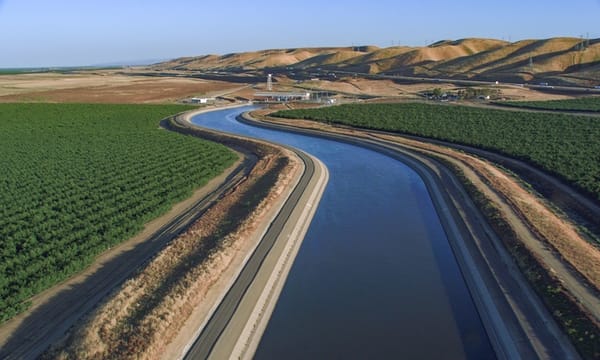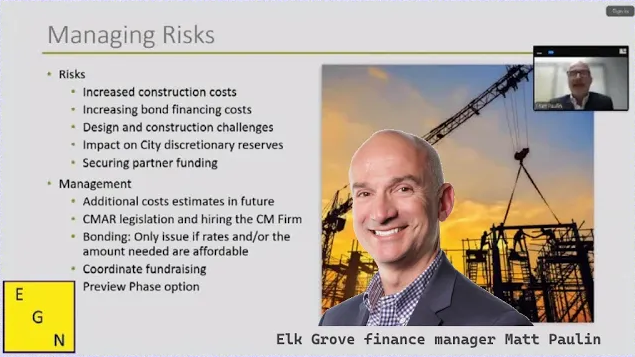The Delta Tunnel Project Could Bankrupt Metropolitan Water District of Southern California
By Dan Bacher |
In a report sponsored by the California Water Impact Network (C-WIN), water policy expert and former State Water Resources Control Board climate change and water conservation manager Max Gomberg revealed that their continued support and funding of the Delta Tunnel, AKA Delta Conveyance Project, could bankrupt the powerful Metropolitan Water District (MWD) of Southern California.
The embattled project to build a giant tunnel under the Sacramento-San Joaquin River Delta “threatens MWD’s fiscal solvency, promises dramatically higher ratepayer bills, and does nothing to secure long-term water security for the 19 million residents within the district’s service area,” according to Gomberg, who discussed his report and fielded questions from reporters in a press conference held by C-WIN on May 9.
The report is particularly timely, considering that the state will experience more “weather whiplash” ranging from extreme dry to extreme wet hydrological conditions in recent years like those those the state has seen over the last three years, said Gomberg.
Gomberg said the DCP has been promoted as the “long-term solution” to MWD’s water woes. However, he revealed that there are three foundational flaws to this line of reasoning: “an exorbitant price tag, environmental restrictions on operations, and the impacts of climate change on deliveries.”
Gomberg noted that the DCP has a current estimated cost of $16 billion — and that MWD has spent around $240 million on planning for the tunnel project and its predecessors over the past couple of decades.
“Though MWD has not published an estimate of its cost share and likely rate increases, it has produced a 10-year budget outlook and integrated resources plan (IRP); it has also embarked on a planning process designed to integrate likely climate change scenarios with both the budget and IRP,” said Gomberg in the report’s executive summary. “These documents raise serious concerns about the DCP and MET’s participation in the scheme.”
“The current IRP encompasses an analysis of climate change impacts on future water supplies – but the 10-year budget outlook focuses on sales projections, assuming both stable water demand and undiminished deliveries from the Colorado River Aqueduct (CRA). The assumptions that underlie the budget, however, seem delusional. Urban water use has fallen dramatically over the last 20 years, and the trend is continuing; and the drying and overallocation of the Colorado River watershed is well documented. Given the ineluctable decline in Colorado River water resources, California’s supply share will inevitably decrease,” he stated.
MWD’s IRP acknowledges this “possibility,” but its budget outlook assumes CRA deliveries will somehow increase beginning in 2028. “This is an impossible circle to square,” Gomberg continued.
He said given these impediments to the DCP, MWD’s budget and resource analyses should give full weight to viable alternatives.
Gomberg said water affordability is a pressing concern, especially for low-income households. “There are no state or federal water assistance programs to help low-income residents, and water agencies are prohibited from using ratepayer funds for low-income household assistance due to Proposition 218,” he noted.
“Given that future rate increases for MWD are a virtual certainty, this points to a grim future. California will inevitably experience reductions in Colorado River water deliveries, and MWD must correspondingly invest in conservation, groundwater storage, stormwater capture, and water recycling, regardless of whether the DCP is built,” he stated.
Under the best of circumstances, Gomberg said the DCP will not deliver water before 2040, when MWD water will range from $2,500 to $3,000 an acre foot under current projections.
“As water bill defaults increase and member agency purchases decrease, MWD (which relies on water sales to member agencies) will be forced to respond with ever-increasing rate increases, further driving down sales and permanently reducing MWD’s operating budget,” he revealed.
He said this “doom spiral” will “prove catastrophic” for the district, its member agencies, and ratepayers. To help avoid this disastrous scenario, he said MWD must immediately commit to full transparency on its cost structure and investment decisions, and their impacts on water affordability.
The report makes a number of recommendations:
MWD should adopt several practices to demonstrate its commitment to transparency and ensure its decisions are based on sound analytics:
- Develop and make public DCP cost estimates that incorporate analyses of dynamic hydrologic conditions and equity
- Conduct a comprehensive alternatives analysis that evaluates significant investments in local projects
- Fully incorporate dynamic hydrology into financial planning
- Revaluate the definition of “reliability” for a changing climate
- Evaluate possible business model changes, including tiered pricing and equity allocations
“DCP cost estimates were developed when interest rates were lower; given current and probable future fiscal environments, the project will certainly cost far more than originally projected,” the report noted. “Comments on the DCP’s environmental review confirm the inadequacy of proposed mitigation measures for the project, and underscore the short shrift given to the dire impacts the DCP would have within and outside the Delta. Cost estimates must therefore be recalculated to reflect both higher interest rates and increased mitigation costs.”
Given the projected massive environmental impact of the DCP, he said MWD is obligated to describe and quantify both the costs and the benefits of alternative investments that include conservation, stormwater capture, and groundwater recharge.
“An accurate DCP cost estimate must include allocation scenarios that address variable hydrology, environmental requirements for operations, and retail level affordability impacts. The promised reliability of the DCP must also be reexamined, given economic, regulatory, and climatic constraints,” Gomberg explained.
Although the MWD is committed to “diversity, equity, and inclusion,” the policy is not sufficiently emphasized in its DCP IRP and 10-year budget outlook. The agency must redraft these documents using an equity lens, he argued.
“MWD must also adjust its financial planning model to incorporate the impacts of the state’s changing hydrology and reevaluate its criteria for reliability. The state’s electric utilities have already modified operations in response to climate change-driven wildfire impacts. It is time for MWD to similarly redefine its reliability criteria,” he said.
The report said MWD’s member agencies would also benefit from increased support from MWD, including help with conservation and communications programs, technical assistance on statutory and regulatory compliance, and assistance with equity-based pricing.
Finally, MWD must reevaluate its business model, according to Gomberg.
“Currently, the district relies heavily on water sales – but those transactions are certain to decline further for the reasons cited in this report. The best way to ease this pressure and assure future stability for the district and its member agencies is to abandon the DCP. Tiered pricing and equity allocations would also send needed price signals to communities with high water use, further reduce demand (especially during dry periods), and allow for greater sales revenue,” he revealed.
He said MWD should also consider diversifying its revenue stream. It could serve as an administrator and consolidator for smaller water delivery systems; play a larger role in facilitating regional supply investments, such as large-scale stormwater capture, water recycling and groundwater recharge; and lease some of its substantial acreage for sustainable energy and telecommunication projects.
“MWD also needs to review its cost structure, including salaries, benefits, and payments for top executives and contractors, e.g.: the FY 2022-2023 and 2023-2024 professional services budget for the DCP and Sites Reservoir is expected to exceed $6.5 million,” he pointed out.
“By undertaking these reforms, MWD could free itself of the DCP – a project that threatens to bankrupt it – and serve as the forward-looking leader in water management that 21st Century Californians need and deserve,” Gomberg concluded.
During the press conference Gomberg also addressed a question about the Sites Reservoir that MWD — and the Gavin Newsom Administration — is supporting.
“California has already taken all the best reservoir locations and has also built reservoirs where they didn’t need to be,” he revealed. “The proposed benefit, moving water more easily, completely whitewashes the environmental impacts. Sites is effectively a giveaway of public dollars.”
Adán Ortega Jr., chair of the Metropolitan Water District Board, told Ian James, LA Times reporter, in today’s article: Report urges Metropolitan Water District to abandon Newsom’s $16-billion delta tunnel plan, that he agrees with some points raised in the report, and “they’re relevant to this discussion that we have to have.”
“I think we’ve spent way too much in the Delta in general,” Adán Ortega Jr said in an interview with James. “Imagine what we could have built down here with [the money spent on Tunnel planning and litigation].”
“It’s not doing the Delta any good, because it prevents the long-term planning that needs to take place there. I want to see some analysis of climate change in the Delta,” Ortega told James.
The full report is available on the California Water Impact Network (C-WIN) web page.



